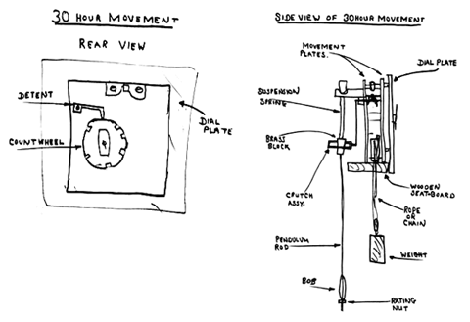Setting Up & Using Your 8 Day Wall Clock
Hook the clock on the wall making sure it is straight and cannot wobble. Some clocks have stabilisers, which can be screwed in or out just enough to prevent wobbling.
The pendulum will have been removed for the journey home and you must refit it. The pendulum consists of a rod with a hook at the top and a bob. Hook the pendulum onto the “hanger”. This part hangs from the movement and often swings back and forth quite freely but take care not to force it beyond it’s free travel. The nut below, or in the centre of the bob, can be screwed up to make the clock go faster or down to make it go slower. If you screw the bob down make sure the bob follows it. Give the pendulum a little push to start it swinging. Listen to the clock tick – it should be steady and even. If not, move the clock, from the bottom, to the left or right until the tick is even. The clock should still appear to be reasonably straight. If the clock has been tilted so much that it looks odd the clock may need to be adjusted at the workshop – call for advice.
Your clock should be wound fully every seven days. It is very beneficial to the clock to wind it fully and keep it running all the time if possible – clocks like to work! Most clocks are wound in a clock-wise direction but some American clocks have anti-clockwise winding on the strike side. When you will not be able to wind the clock for some time, rather than let the clock run right down, it is better to stop it.
To set clock to the right time turn the minute hand (the long one) CLOCKWISE ONLY. If the clock has strike or chime you must stop at the chime/strike positions and wait for it to finish chiming before you go on to the next position.


